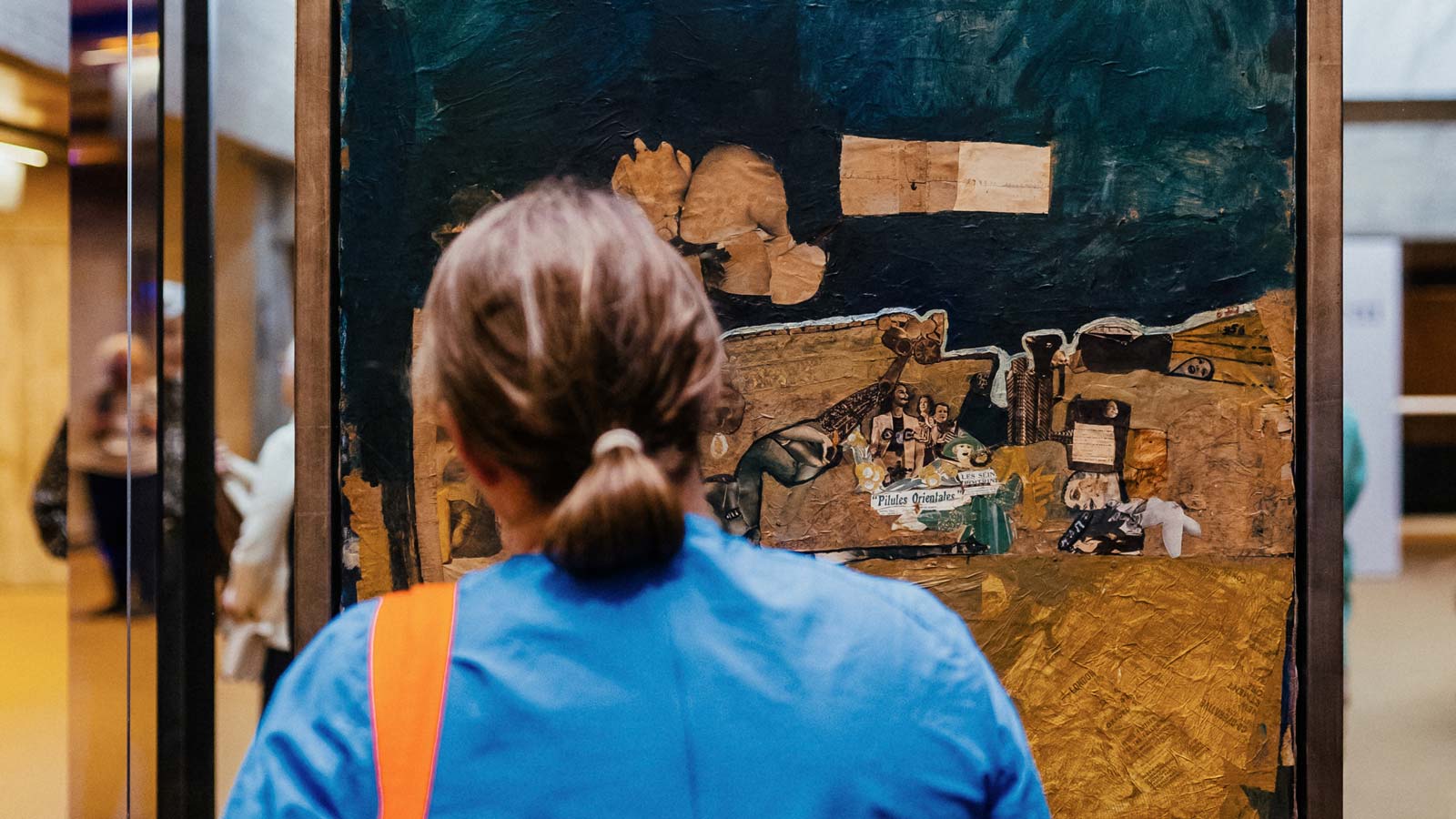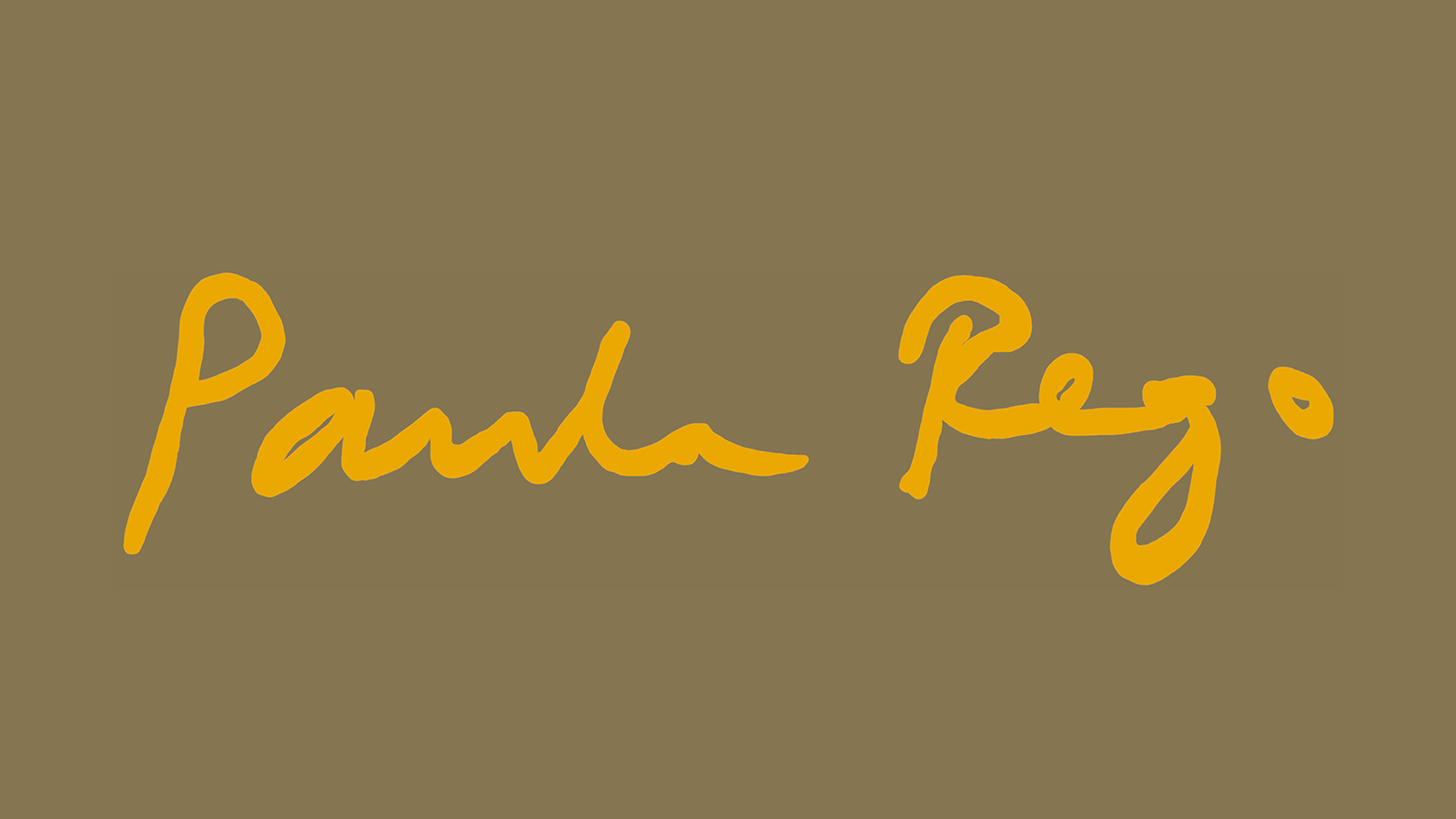Between heaven and earth
In February 2022, CAM – Centro de Arte Moderna Gulbenkian acquired two paintings by Paula Rego (1935-2022), Turkish Bath, from 1960, and Angel, from 1998, consolidating the section of the collection devoted to the artist, which currently comprises 37 works. The programmatic meeting of these two works, separated in time by (almost) four decades and by different research and visual expressions, reveals a comparative coming and going of affinities and fascinations. And it confirms Paula Rego’s unwavering determination to place women, using different means and perspectives, at the very centre of her thought and activity as an artist.
Angel is one of Paula Rego’s most iconic paintings and can be regarded almost as a synthesis of her artistic production. Identifiable and named as an angel, we see the figure of a woman who is decidedly of this world, both avenging and pious, holding in her hands a sword and a sponge, two symbols of the Passion of Christ. Though not explicitly a self-portrait, it is undeniably a self-referential image that identifies with the interventionist sense of her work: between protection and revenge, punishment and forgiveness.
This painting is part of the series of works devoted to the novel by Eça de Queirós, O Crime do Padre Amaro [The Crime of Father Amaro]. The book, which sparked protests in the Catholic Church for denouncing the hypocrisy of clerical celibacy and the permitted death of illegitimate newborns, was forbidden at the time of its controversial publication in Portugal (1875). Angel is inspired by this wealth of fictional material and is an example of the non-illustrative way the artist intervenes in the stories with which she works: in this case, introducing an unexpected element that distorts the outcome of the novel: the angel, who in reality is a woman, ‘avenges the girl who died. It’s my own invention,’ as the artist stated.
The second painting acquired on this occasion was Turkish Bath. Intentionally painted on the reverse of a nude of the artist, painted by her husband Victor Willing, the work is a critical rereading of the neoclassical painting by Jean-Auguste-Dominique Ingres, Le bain turc (1862). Ingres concentrates, in an elegant tondo, the eroticised bodies of 25 odalisques. Paula Rego references these bodies in a somewhat distanced way, stripping them of all eroticism, taking them to pieces. But the secret dialogue she establishes with her nude portrait, on the back, is arguably the most significant subtext of the piece and can be viewed as an early sign of a strong feminist consciousness in her work. Painted early in her career, it marks the artist as a pioneer of themes that, even today, shake the art world in Portugal and the rest of the world.
These paintings are presented with the intention of highlighting works from the CAM Collection in prominent places and closer to the public.
Helena de Freitas


